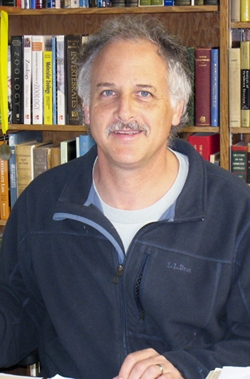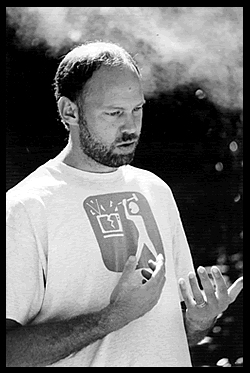
Reiss and Wilson have been named Fellows in the Life Sciences 2011-2012 by the National Academies in Education. They attended the NAE’s Regional Summer Institute in September on Undergraduate Education in Biology. It was held at Evergreen State College, Olympia, WA.
The institute brought teams together from 16 research universities nationwide for intensive group applications of new scientific teaching methods that address in concrete ways how students learn.
Barbara Schaal, National Academy of Sciences vice president, said Reiss and Wilson’s participation placed Humboldt State “in the forefront of the improvement of undergraduate education that is so essential for preparing both future scientists and scientifically-literate citizens.”
Instead of traditional classroom lectures, Reiss said, alternative teaching methods focus on active learning techniques aimed at continuous faculty-student engagement in the classroom. Techniques include breaking classes into small groups, enabling students to interact with one another and learn how to develop critical thinking skills and solve problems.

Teaching effectiveness and students’ retention of course material can be measured with clicker technology. Students press a button to answer on-the-spot quizzes electronically, giving them instant feedback on whether they have correctly understood a classroom presentation. Faculty, too, gain the advantage of near-real time feedback. They do not have to rely solely on an exam to gauge whether their students are “getting it.” Such exercises boost student motivation while enabling faculty to judge if a class has digested a given point before moving on to the next one.
“These techniques are more effective because students are actually thinking about the material as they go through it, rather than just listening to the teacher talk about it,” explained Reiss, who is a professor of zoology.
Wilson, a specialist in genetics, said the emphasis is on teaching students to understand conceptually how to approach problems and construct their own knowledge. At the same time, faculty at the Evergreen Institute analyzed whether their teaching techniques were effective or not.
“As scientists,” Wilson elaborated, “we’re really good at devising experiments and we’re really good at developing ways of testing hypotheses and generating alternative ones to explain data sets. But it seems as though none of those skills have been brought to bear on improving teaching. For example, we never collect baseline data on where students are when they first come into a course and where their knowledge is when they leave it—so we don’t have an idea of how effective we’ve been. Likewise, we don’t set up control groups, teaching students in two different fashions and comparing the effectiveness of the approaches.”
Alternative teaching methods take into account the human mind’s limited short-term memory. Research shows that learners retain about seven items at once. Even these will be remembered only a few minutes unless time is allowed for assimilating the material and thoroughly grasping it. But when students immerse themselves actively in the material, they generally understand it better and remember it longer. Techniques include starting a lecture with questions or problems for students to consider throughout the class, spurring them to share their thoughts with each other and come up with their own ideas spontaneously.
Part of the theory behind the movement toward scientific methods of teaching is that students must develop concepts themselves if they are really going to learn the material, Reiss emphasized. “You can tell them something in a lecture but that isn’t really going to make it their own knowledge; they have to create that knowledge in their own heads. Creation is different from absorption. It means seeing certain connections and putting them together in your own mind and coming up with the concept that unites them.”